MULTICAULIS (Rose) Moran, 1953
Synonyms :
Hasseanthus multicaulis Rose (1903) / Sedum multicaule (Rose) Fedde (1904)
Hasseanthus elongatus Rose (1903) / Sedum elongatum (Rose) Fedde (1904) / Hasseanthus variegatus var. elongatus (Rose) Johnston (1918)
Sedum oblongirhizum A.Berger (1930) / Hasseanthus oblongirhizus (A.Berger) P.H.Thomson (1993)
Sedum sanctae-monicae A.Berger (1930)
Subgenus Hasseanthus
Distribution : USA (California: Los Angeles, Orange, Riverside, San Diego and San Bernardino Counties); coastal flats, rock and steep slopes, 10 - 600 (-1200) m, often loamy soils, rare.
Description (according to J. Thiede in IHSP, 2003) :
Stems oblong, 13 - 50 x 3 - 18 mm.
Rosette with 6 - 15 leaves, solitary.
Leaves erect or spreading, linear, cylindrical except the base, apically narrowly acute, 3 - 15 cm x 1.5 - 6 (basally 3 - 10) mm, vernal.
Inflorescence : Scape 4 - 25 (-36) cm, inflorescences 1 - 35 per plant, cymose, with 2 to several scorpioid branches, these 2 - 10 cm, with 3 - 15 flowers, pedicels 0 - 3 mm.
Flowers : Sepals triangular-ovate to linear-oblong, acute to obtuse, 2 - 4 mm, corolla 12 - 18 mm in diameter, petals elliptic-lanceolate, spreading or apically somewhat recurved, acute, 5 - 9 x 2 - 3 mm, yellow, often spotted with red, tube 1 - 2 mm, anthers darker yellow.
Flowering time : April - June.
Cytology : n = 17
Very variable as to plant size. Most closely related to D. variegata with very sirnilar flowers (Moran 1950).
In habitat, Top of the World, Laguna Beach, CA, USA :
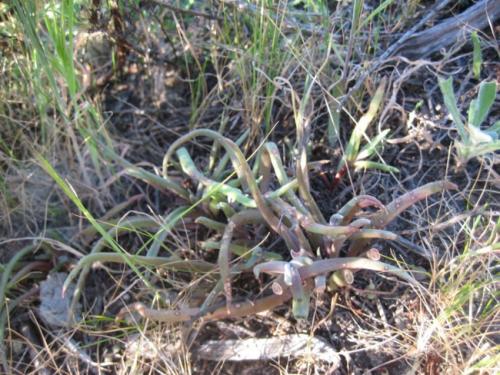
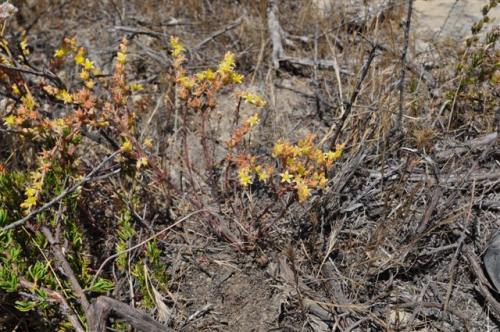
Orange County, CA, USA :
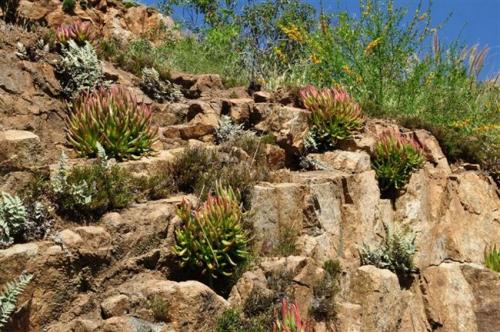
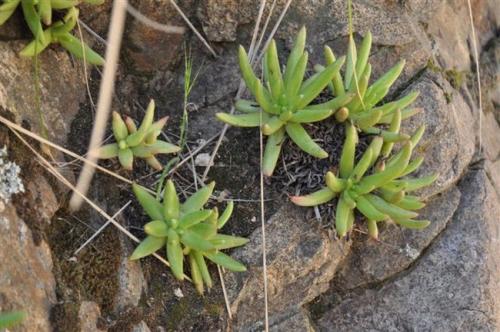
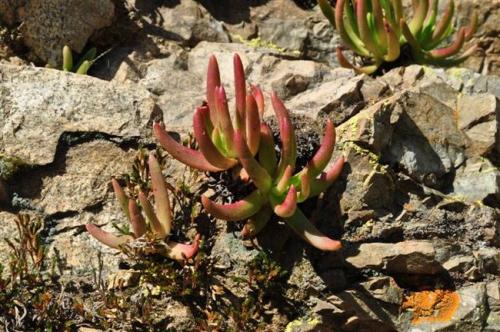
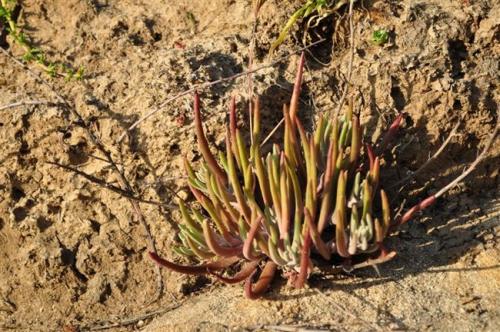
Photos Michael Wisnev.